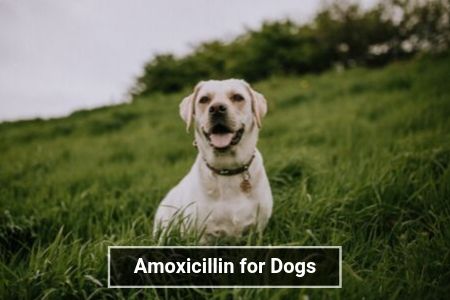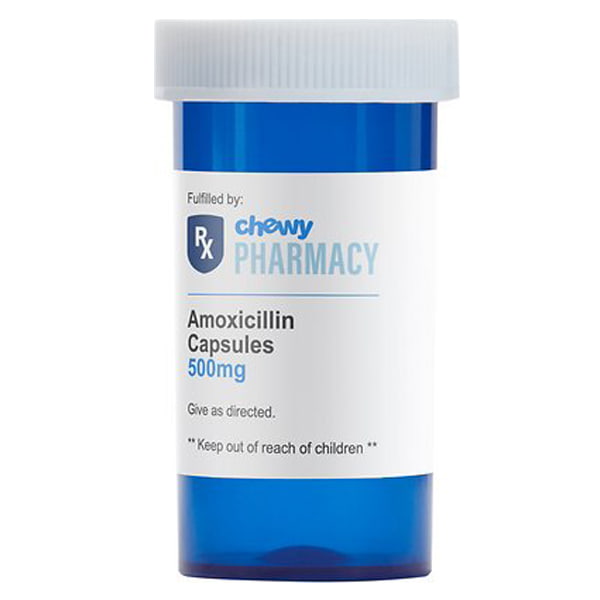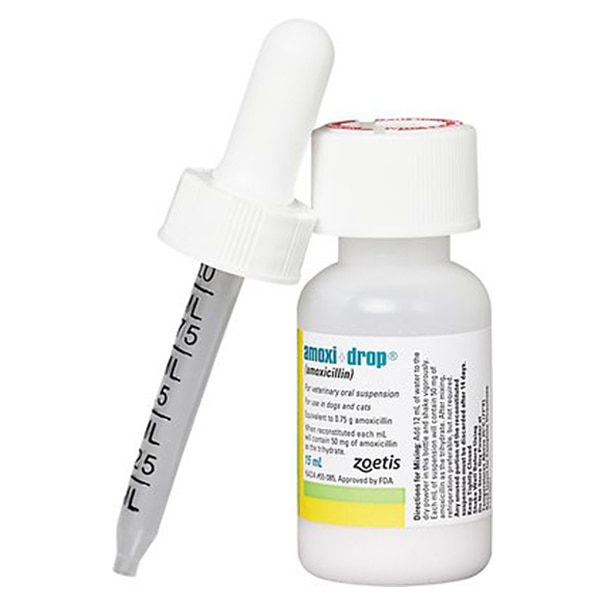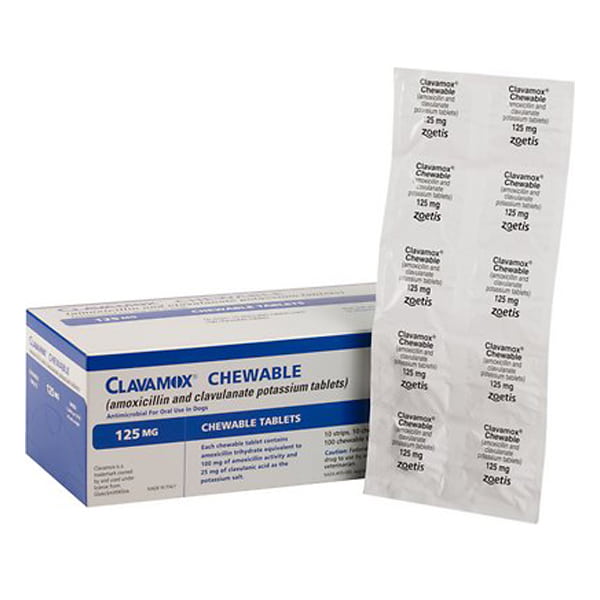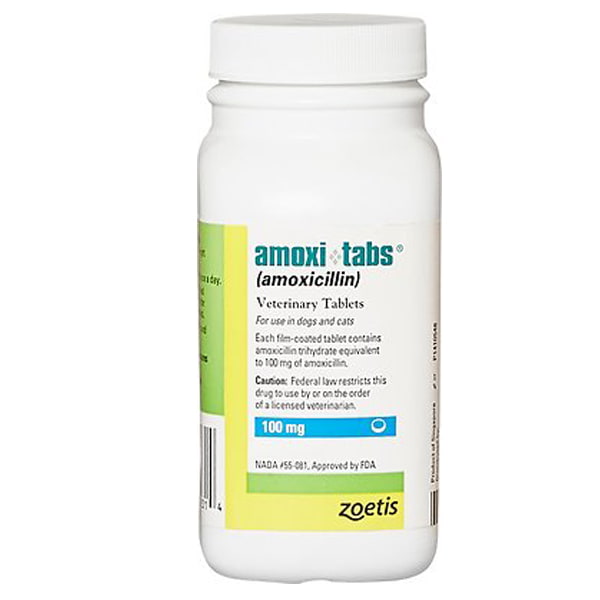Amoxicillin is a medication that will be familiar to many dog owners as they may have used one by the same name themselves at one time or another. While the properties of Amoxicillin are similar in both humans and dogs, the drug itself is not identical when it comes to giving it to your pup so do not think you can give your dog your meds out of your medicine cabinet. By giving them a human pill, you may introduce ingredients such as artificial flavors, colors, preservatives or xylitol that can be very detrimental to you your dog. The dosing is also very different for humans compared to canines. You would not want to give your dog a human dose through a miscalculation and make them sicker than they already are. You need to make sure they get the canine version for health and safety reasons.
Amoxicillin is considered better than penicillin as it is broader-based and isn’t hindered by the stomach acids once given to your pet. This drug gets rid of threatening bacteria by stopping the creation of the bacterial cell walls thus stopping the bacteria from forming. It is usually prescribed by vets to get rid of bacterial infections in animals such as mouth issues like tooth abscesses, lower respiratory tract infections, bacterial issues with the skin, sores, ear infections, urinary and digestive tract issues, Lyme borreliosis and other similar problems. Along with these infections, it will also treat strains of bacteria that include H. influenzae, N. gonorrhoea, E. coli, Pneumococci, Streptococci. It will not treat viral or parasitic infections.
Amoxicillin from the penicillin family and semisynthetic drug in the form a trihydrate which is a chemical compound that includes 3 molecules of water. Hence, the “tri” in the name. This compound is the ingredient that is active in this medication and provides a bactericidal activity to combat both gram-positive and gram-negative infecting bacteria. Amoxicillin spreads easily into the body and most of its tissue and fluid. This does not include the brain or spinal fluid though. However, it extends wide coverage overall.
Uses of Amoxicillin in Dogs
Amoxicillin can be prescribed to treat a large range of illnesses and ailments in dogs. Its broad-based ability means it can fight off many minor and major bacteria. It is a limited drug though as it can not treat viruses or parasites.
Amoxicillin can be used to treat:


Dosage of Amoxicillin
Amoxicillin comes in doses ranging from 50mg to 875 mg. Oral suspension for veterinary use is available. The vet will recommend a dose based on 5-12mg for every pound your dog weighs. This should be given every 8-12 hours depending on the vet’s preference. Your dog does not need to take it with food but it sometimes helpful just to help keep their stomachs settled. These dosage quantities may vary depending on your dog, their size, general health, and ailment.
It's often suggested that dogs take antibiotics with food to make sure it doesn’t upset their stomachs. While amoxicillin can after the GI tract, it does not have to have food taken with it.
That being said, it won’t hurt to give the medication with food either. It may help keep your dog's stomach settled and will certainly speed up the absorption of the medication. It is also important to make sure your pup has lots of fresh water while they are on the full regimen of meds just to keep them hydrated and to help their systems absorb the prescription.
Your dogs’ vet will likely recommend that you give your dog their dosage around the same time every day not only because it keeps it easy to remember but it helps keep the same amount of medicine in your dog’s system over time. Doing this means there will be no spikes or drops in the amounts.
Amoxicillin is only obtainable with a prescription from your dogs’ veterinarian. As was pointed out earlier, your dog can not take human forms of the drug. There are some dogs who it is not recommended for such as:
However, sometimes there will be a need to weigh the pros and cons of this as the benefits of the medicine may outweigh the problems that a dog might encounter.
Dosages for Dogs:
Amoxicillin is used to fight off bacterial infections in your canine and can be given in various forms as needed. It is sometimes combined with Clavulanate Potassium to help boost its bacteria-killing power. It protects the amoxicillin by preventing bacteria from destroying it. Amoxicillin can be given by capsule, liquid form, chewable tablets or regular tablets.
If you are using regular tablets then you may want to hide them in food or a pill pocket. Choosing a form of medication will be based on the best and easiest way to get the drug into your dog.
Amoxicillin Side Effects in Dogs
Amoxicillin should only be prescribed when the vet knows that it is a bacterial infection that is troubling your dog. If your pet has reacted to other antibiotics such as penicillin, then they may react strongly to this drug. While it should never be given to animals who are raised as food due to amoxicillin binds to protein, this is obviously not an issue with dogs. The other issue that may arise with amoxicillin is the fact that it doesn’t interact well with some other medications. It shouldn’t be taken with Allopurinol or Erythromycin. Beyond these precautions, you will also have to look for side effects that may occur on top of these other issues. Drugs will always list the possibilities of side effects simply to make sure that even if the occurrence is rare, owners will understand what may crop up on the off chance their dog reacts. Theses effects are listed for precautionary reasons in the hopes that should they occur the owner will seek treatment quickly as they will recognize them.
General Amoxicillin side effects are listed as:
Overdose symptoms are:
Extreme overdose symptoms:
Allergic reactions – these tend to occur quickly:
Some of these side effects can be reduced if your pup is given the medication with food. This will help settle their stomachs if they are upset. Water will also help this along with swallowing problems as this is often the pill getting stuck. If nausea and upset stomach get really bad, then there could be a problem with the prescribed amount of medication or a misdose causing too much to be in your dogs’ system and they start to overdose. Your vet needs to be called immediately if this is the case.
Amoxicillin can interact badly with some other limited medications. This can be critical so it's crucial to make sure your dog’s vet knows if they are taking any other drugs prescribed or not. This includes herbal remedies and over the counter ones as well. You don’t want them to have negative interactions so it's important to be proactive in this area. Some that can react poorly are:
Bacteriostatic antimicrobials such as:

These various drugs that can have a negative interaction won’t stop your dogs’ vet from prescribing amoxicillin, but it just means that extreme caution is needed when your dog takes the antibiotic. You may need to adjust the timing of when your dog takes it. There may need to be space between whatever meds they are already taking and the new antibiotic.
In the list of side effects, you can see that some can be fatal and one of these is the allergic reaction that comes with the ingestion of amoxicillin. It can lead to a fatally induced reaction called anaphylaxis. This reaction happens when your dog’s immune system reacts violently to the drug as its introduced. The reaction is a quick and severe swelling of the dog’s tongue and lips along with extreme hives or their airway can swell drastically creating an inability to breathe. If any of these severe side effects happen, your dog needs emergency care as their time will be very limited to get help and survive.
As with every medication, the side effects always sound dire and frightening but in reality, these things rarely happen. Amoxicillin is a well tested and trusted medication that lays out any problems your dog might come across should they take it. It has great healing properties and if you are aware of the negatives then your dog should be in good hands. They will get good treatment for their infection, so they are healthier quicker.
Final Thoughts
Amoxicillin is a well-known medication that is widely used with great success in taking care of bacterial infections in various forms. The fact that is more helpful than the earlier forms of penicillin and other antibiotics makes it more useful to veterinarians as they attempt to get control of various infections in dogs. It works as both a primary and secondary medication and can be extremely useful in combination with anti-inflammatory and pain reduction meds.
As dog owners, we do our best to keep our canine companions in healthy and happy shape but there are times when we can’t do anything to keep the bacteria at bay. Illness can creep up when we least expect it. If you see symptoms that you think signal a bacterial infection, head to the vets to get confirmation and begin treatment as needed. Whether it’s a simple infection or something deeply systemic, the sooner your dog is diagnosed, and a treatment plan put in place, the better off they will be. Both your pup and you will both feel better when they are on the mend.


